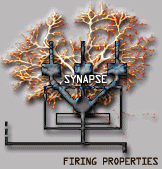 VISUAL ATTENTION
VISUAL ATTENTION  VISUAL ATTENTION
VISUAL ATTENTION
Hebb's work on cellular studies in anaesthetized and alert animals influenced current ideas about the cellular basis of perception. The idea of relating cerebral blood flow to cognition is also an old one, but the development of convenient methods to achieve this has taken place only in the last ten years.
The methods of nonlinear dynamics, employing trajectories developed for simpler sensory modelling, are extended to classes of problems which lie at the interface between first sensations and perception, as well as sensation of perceived danger. Fundamental relationships between core processes of psychophysics in time and space, and recurrent quantitative or topological distortions of the physical world which arise in perception, are given a new treatment
The PET studies mentioned before indicated those areas of the human brain showing increased blood flow during the passive reception of color, motion, and form, including those of danger stimuli.
The subtraction was isolating those areas, and only those areas, activated when the subject attended to a particular attribute such as danger. If correct, the findings should show more activity in those attended areas in the subtracted image. The logic of this subtraction is thus to determine if attention to danger, for example, amplifies neuronal activity in the area of the brain related to danger and thus increases blood flow in that area.
There is a strong correspondence between the areas activated during this experiment and the areas activated during passive stimulation by color and motion.
In higher cognition, the act of attending organizes the circuitry between brain areas. It is in this sense that attention can control the order of computations such as those involved in the thick letter and semantic category tasks. If this hypothesis concerning the brain is correct, conjunctions can be used to explore the relation between remote areas of the brain during specific cognitive tasks. The method uses the person's own attention to illuminate the order of the computations and thus the higher-level circuits that execute the task instructions.
NEXT
OTHER
2.feb.1999
Pulsar tecla de vuelta
Glosario de Carlos von der Becke, where some specialized words are explained.